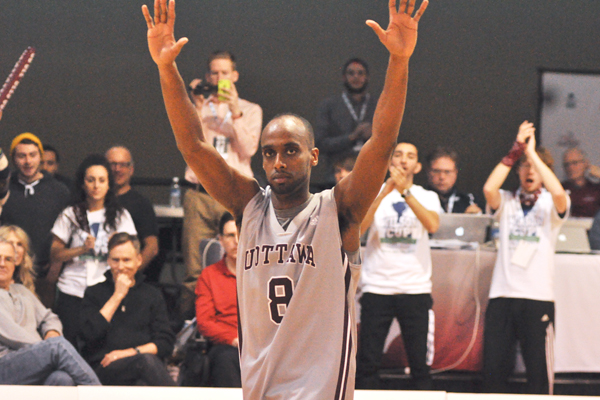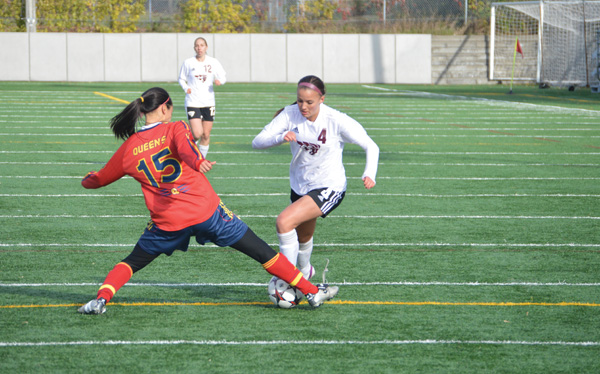ACL injuries plague Gee-Gees athletes
Spencer VanDyk | Fulcrum Staff
Image by Mathias Macphee
ANTERIOR CRUCIATE LIGAMENT (ACL) injuries have been a problem lately for two Gee-Gees varsity teams, causing two of our star athletes to be pulled temporarily out of the game. Karina Krueger Schwanke, the Ontario University Athletics volleyball player of the year, tore her ACL at the Canadian Interuniversity Sport nationals last weekend, and Kellie Ring, all-star point guard for the women’s basketball team, suffered the same injury playing Carleton on Feb. 15. Fifth-year men’s basketball captain Warren Ward returned to the court earlier this season after a 10-month recovery period following an ACL surgery.
The ACL is one of four ligaments in the knee that regulate the movement and stability of the knee joint. Injuring the ACL can cause serious instability and can limit or fully inhibit the leg’s range of motion. Ring did not injure any other ligaments, but suffered a complete ACL tear. She is hoping to have surgery soon, and will then have a six- to eight-month recovery process before hopefully being able to return next season.
“When I injured it, I didn’t really have any range of motion,” Ring explained. “I couldn’t bend my legs, but since then I’ve been building up my muscle. After the surgery, I’ll have to build it up again. Now, my range of motion is pretty good. I still can’t straighten out my knee, but it’s been pretty good.”
Ward injured his ACL on Jan. 6 of last year during a game against Laurentian; on March 1, he had surgery, which replaced the torn ACL with part of his hamstring. Since then, Ward has been in physiotherapy.
“The next day it got really swollen, and I knew something was wrong,” Ward said of the initial injury. “When the doctor told me it was my ACL, I panicked. I had surgery … and after that, it was a ten month rehab to get back.”
Ward received surgery quickly because he had played on Team Canada in the Pan American Games the previous summer, and was therefore able to see the best doctors much faster than usual. Getting surgery, though, is only the first step.
“The surgery part is not that hard,” he said. “The recovery is that you have to build the muscle back up. I was working out for three months prior to the surgery to make my leg bigger and stronger. You have the surgery and then your leg just shrinks. I lost my entire calf, my quad was really really swollen, and you just have to do exercises practically every single day. The hardest part can really be mentally. It’s a big test of your mental strength. I was blessed to be with a really good trainer. My trainer took really good care of me. My recovery was smooth, but seven days a week, for at least eight hours a day.”
Ring said ACL injuries are extremely common for athletes, but prevention is not so straightforward. Neither is the diagnosis.
“When you get a concussion,” she said, “you know right away, because you have all the symptoms. But when I hurt my leg, I wasn’t sure right away whether or not it was my ACL, because there are so many ligaments, and so many things that I could’ve done.”
“If it does happen to you,” Ward said, “you just have to accept it, and just keep yourself mentally strong to overcome.”






